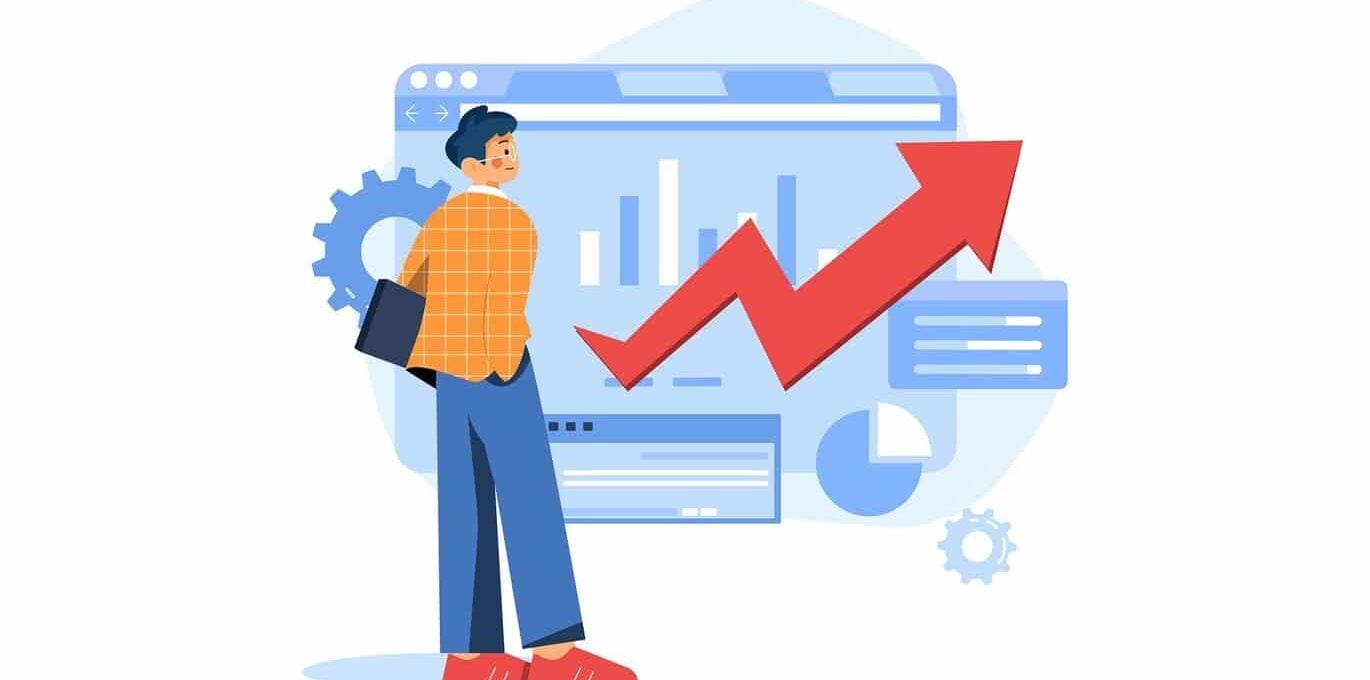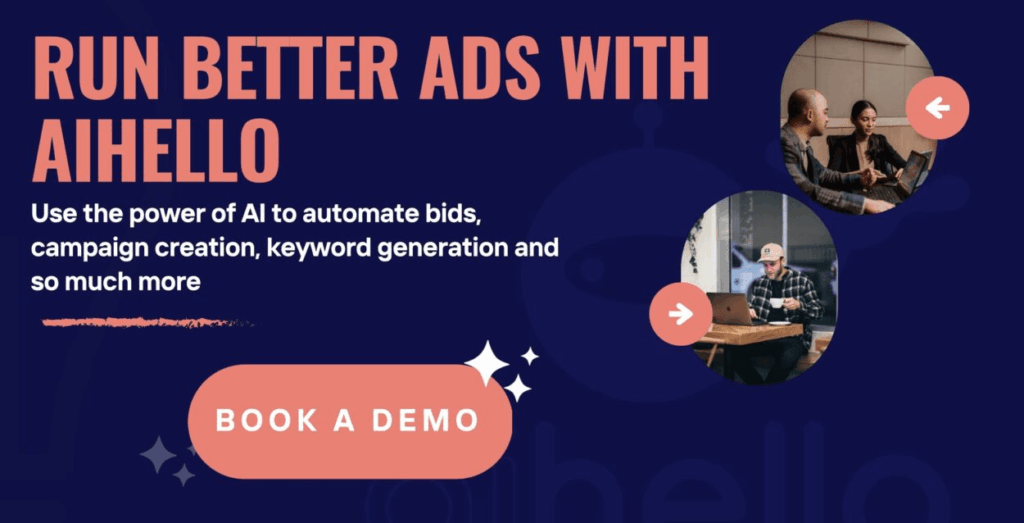Don’t just get traffic, get *conversions*! Learn why your Amazon listing’s conversion rate is key to sales, ranking, and business growth.

Amazon’s conversion rate: Everything You Need to Know (2024)
More visitors to our listing is always great, but receiving appropriate visitors is more vital than merely having more people see our pages without taking any action.
How many of the hundreds or thousands of individuals who click on your listing make a purchase? It is far preferable to be visited by only 5 individuals per day, all of whom make a purchase, than to be visited by a thousand people per day, only two of whom make a purchase.
It’s one thing to get traffic. It’s another thing to get the correct traffic.
If you embrace all types of traffic with open arms, there’s a risk that your conversion rate will suffer, and your ranking will suffer as a result.
In this post, you’ll learn what conversion rates are, why they’re important, and how to improve them for little or no money.
What is Conversion Rate?
Depending on what action you want users to take, the conversion rate can indicate different things.
If you want to calculate the conversion rate for email subscriptions, for example, divide the number of individuals who visit your site by the number of people who subscribe to your newsletter.
The conversion rate is a metric used by Amazon to determine the number of page visits that result in a sale.
This is a crucial measure for several reasons:
- It provides you with a broad overview of the health of your listings.
- It improves the ranking of your product.
- It assists you in evaluating the outcomes of your listing copy A/B testing.
- It assists you in determining which areas require improvement.
A high conversion rate, on the other hand, does not always imply that your firm is performing well. Remember that one visitor who purchases your product means a conversion rate of 100%. As a result, rather than looking at the %, it’s still important to look at the actual figures.
Sites that sell a product or service often have a conversion rate of 1 to 2%. When it comes to Amazon, though, this number is substantially greater.
Amazon listings have a conversion rate of 10% to 15% on average. Prime members had an even higher percentage, over 74%. This is because many consumers who browse Amazon are already planning to buy something—if not right away, then soon.
Another reason why so many eCommerce retailers utilise Amazon as one of their platforms for selling things is because of this.
But probably the most essential reason to track conversion rates is that it is one of the variables that propels your listings to the top of search results. To rank listings, Amazon’s A9 algorithm takes conversion rates and sales velocity into account.
As a result, if your listing has a low conversion rate, your product is less likely to appear on the first page of Amazon search results.
Ready to increase your sales?
How to Calculate Conversion Rate?
Conversion rate = (Total Conversion) / Total Clicks
On Amazon, the average conversion rate is 9.87%. Of course, these averages vary greatly depending on the specialisation, as they do with any measurements.
Customers want to search around and compare products before making a final choice to purchase, so more expensive products ($100+) will often have lower conversion rates.
Other than Amazon, the average eCommerce conversion rate is around 1.33%. This translates to a 9.89% average Amazon PPC conversion rate, which speaks volumes about the efficacy of Amazon advertisements. These are hot prospects at the bottom of the funnel who are eager to buy.
Conversion Rates in Context:
Although conversion rate is a relevant statistic in and of itself, it’s also crucial to understand the elements that influence it:
- Conversion rates are more accurate when time frames and sample sizes are longer. After all, more information is always preferable.
- Because clients have more excellent options to choose from, strong and numerous competition lowers conversion rates.
- Profit reigns supreme. It doesn’t matter how high your conversion rate is if you aren’t making any money. Always double-check that increased conversion rates are bringing in enough money to cover any costs.
What Is A Good Conversion Rate For Amazon?
It’s difficult to say what constitutes a “good” Amazon conversion rate because it varies depending on the things you offer. On average, a reasonable conversion rate on Amazon should be between 10% and 15%.
For example, if your conversion rate is 50%, you’ll be ecstatic, right? The situation would be different if you looked at the data of this conversion thoroughly.
Assume you have four sessions and two orders. You won’t be satisfied unless you sell your things for a very high price with a large profit margin.
Assume you have a conversion rate of only 3%, based on 3,000 sessions and 90 conversions for your products. You’ll be pleased with this statistic because you had a large number of sessions and sales.
How Can You Monitor Your Amazon Conversion Rates?
There are only a few steps to tracking Amazon conversions:
Step 1: Select Business Reports from the Reports menu.
Step 2: Examine the sales and traffic statistics.
Step 3: Locate the Order Item Session Percentage row. Your conversion rate will be displayed here.
Step 4: This option combines all of the elements.
Step 5: To get it by product, check for reports that say “by ASIN.”
Causes for Low Conversion Rate
If your conversion rate is below average, it’s probable that your listing, ad campaign, or both are in need of some attention, and there are a number of contributing elements to consider.
1. Optimization of the listing
Product listings that are unattractive or unclear are a common cause of low conversion rates. Customers may be unsure of what your product is like since your primary image is grainy or your image stack just contains one or two photos. You can have an unclear or insufficiently specific title or a product description that isn’t detailed enough. If a buyer visits your page and is confused about what they will get from your offering, they may decide to shop elsewhere.
On the other hand, perhaps your product description is buried in long words. Customers are unlikely to browse through a listing if it isn’t easy to understand and detailed enough to win their trust in the goods. As a result, they are unlikely to make a buy. Improving your listing’s conversion rate could be a game-changer.
2. Reviews
Bad or few reviews are another factor that contributes to low conversion rates. When customers see only three stars on a product or critical reviews that have gone unanswered by the seller, they will be suspicious that they will have a horrible experience with your goods.
3. Price
Pricing is something else to think about. You’re less likely to make a sale if your product is overpriced, or even if it’s underpriced. Buyers will hunt for cheaper alternatives if the price is too high, and if the price is too low, you may be communicating a lesser level of quality. To convert, you must keep your prices low.
4. Advertising
One area where your conversion may be hurting is listings. Another example is advertising campaigns. It’s possible that you’re bidding on the wrong keywords or ones that are way too broad. Maybe you’re selling a crossbody women’s purse, but you’re bidding on “women’s purse” instead of “crossbody women’s purse.” When a buyer searches for a “women’s purse,” your item will get lost in the flood of results, and because it isn’t precise enough for your goods, your conversion rate will suffer. You’ll also be squandering money on advertising that may be better spent on more profitable keywords.
How can you increase the conversion rate of your Amazon advertising?
Improving your conversion rate benefits both directly and indirectly every aspect of your organisation. When your conversion rate is high, it not only means you’re earning sales, but it also means your product is popular, and Amazon algorithms will reward your brand by ranking your listing higher in search results, resulting in even more sales.
You want to focus on making the shopping experience as straightforward and simple as possible for Amazon shoppers with high intent to purchase to enhance your conversion rate. Here are a few options for doing so.
1. Optimize your listings:
We discussed it previously, but the appearance of your listing is crucial to how well it converts. The main image, title, and price are the first things a buyer sees while browsing through a list of products, therefore they must be perfect.
Beyond that, picture stacks are critical, especially as more people purchase on their phones. When a consumer clicks on a listing on a mobile device, the first thing they see is your picture stack, and if they scroll just a little farther, they find the buy box–there is no listing description or A+ content on the site.
And it’s not just about having an image stack–because this may be the first thing a buyer sees, you’ll want to make sure it’s a meaningful image stack with high-quality photos and, in certain circumstances, instructional graphics that can assist a shopper to learn how to use your product. The faster a shopper understands exactly what they’re buying, the higher your conversion rate will be.
Not only should your photographs show the goods, but they should also sell them. Use your photos to highlight desirable aspects, demonstrate how your product works, include good customer comments into your visuals, respond to FAQs, and so on. You want people to comprehend the problems your product can address for them simply by looking at a picture of it in action.
However, just because the picture stacks appear first on mobile doesn’t imply you should disregard the description. Customers on mobile devices will have to scroll for more information, whilst desktop users will receive the description immediately. Make sure the information you present in the description is simple to understand (easy to skim is even better). Bullet points that expand on the information in the picture stacks are recommended.
So that customers can instantly get a sense of who you are as a company and what your product can accomplish for them, your copy should be concise, engaging, and informative.

2. Offer Discounts:
When buyers realise they’re receiving a fantastic price on a product, they’re considerably more likely to buy it. Obviously, you won’t want to provide discounts with all of the time, but a special offer on a product now and then will help raise conversions. It assists you in remaining competitive and noticeable.
3. Improve Customer Experience:
Higher conversion rates are more likely for firms that provide customers with memorable purchasing experiences, whether through shipping, packing, email campaigns, or customer service. They build loyalty by establishing trust and generating excitement for their brand, and a loyal customer base is a customer base that converts.
4. Create an Omnichannel Sales Funnel:
Another strategy to boost conversion rates is to route sales from other channels, such as Facebook or Instagram, to a landing page that sends people to your Amazon listing. This allows visitors to acquire a better understanding of your product before visiting your listing to make a purchase. It’s very likely that they’ll convert if they like what they see on your landing page and click through to your listing. It takes a little more effort, but it’s a strategy to attract purchasers with high intent.
5. Leverage reviews:
When a shopper visits a listing, one of the reasons they don’t buy something is because there isn’t enough social proof on that item to persuade them that it’s a good idea. Include prominent buyer reviews in your material or be aggressive in responding to unfavorable reviews as a strategy to remedy this. This will assuage your potential buyer’s fears and give them confidence that they will have a positive experience.
Amazon’s badges on products can provide further social proof: Amazon’s Choice, Best Seller, Climate Pledge Friendly, and so on are just a few of the banners that can increase trust in your offering.
Conclusion
Not only does your Amazon conversion rate show how many of your page visitors actually buy your product, but it also shows how much money you make. It also helps your listing rank higher, resulting in more visits over time.
You may boost your conversion rate in a variety of ways. I’ve talked about a few of them in this article, but there are plenty more you can try.


